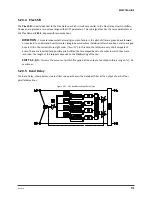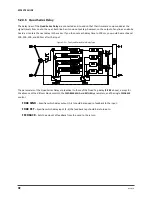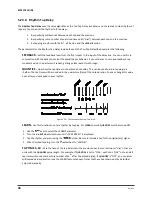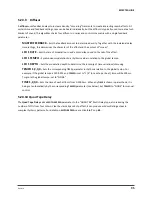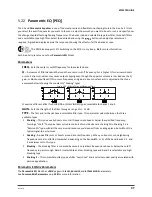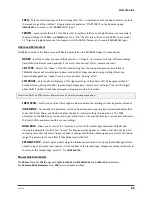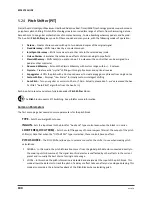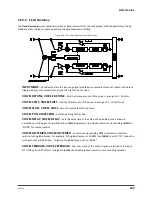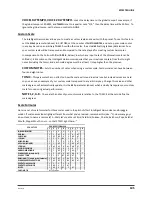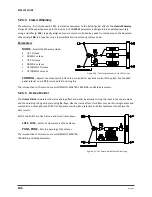
Doc Q7.0
99
FREQ
– Sets the start frequency of the first stage filter. This, in combination with the depth control, controls
the sweep range of the notches. This parameter is repeated as “START FREQ” on the Advanced page.
(
FREQUENCY
is not used in the “BARBERPOLE” type.)
TEMPO
– Synchronizes the rate of the Phaser LFO in rhythmic relation to the global tempo. For example, if
the global tempo is 120 BPM, and
TEMPO
is set to a “1/4,” the LFO rate will be 2 Hz (120 BPM / 60 seconds =
2). To ignore the global tempo set the tempo control to NONE. (Tempo is not used in BARBERPOLE type.)
Advanced Parameters
(All BASIC controls of the Phaser except
TYPE
are duplicated on the ADVANCED page for convenience).
ORDER
– Sets the number of phase shifting circuits—or “stages”—in increments of two. Different settings
have distinctly different sound qualities. For a more “pronounced” effect, increase the order.
LFO TYPE
– Selects the “shape” of the LFO, determining how the sweep changes over time. SINE or
TRIANGLE shapes will emulate classic phaser sounds. SAW shapes provide rising or falling effects, and
Exponential/Logarithmic “shapes” create a more extreme “pulsing” effect.
LFO PHASE
– Sets the phase difference of the right waveform of the phaser LFO. Values greater than 0°
produce stereo phasing with 180°, reproducing the legendary “reverse sync” setting of “the world’s largest
phase shifter” (which incidentally employed six stages per side in this mode.)
See section
for more information on LFO waveform shapes and phase.
FREQ SPAN
– Sets the span of the filters. Higher values separate the resulting notches by greater amounts.
VIBE MODE
– Technically, this parameter sets the all-pass frequency spacing. But it would probably suffice
to say that if Jimi, Robin, and David had a favorite Axe-Fx II phaser setting, this would be it. The
TYPE
parameter on the BASIC page can be used to get dial in classic ‘vibe sounds instantly, or you can manually turn
this switch ON to experiment with your own settings.
BULB BIAS
– Allows you to control the “quiescent” current of the virtual light bulb used in Vibe Mode.
Varying this parameter controls how “lumpy” the frequency sweep behaves. Unlike a real 'vibe, the Axe-Fx II
compensates so that the center frequency doesn’t change with the bias, allowing easier control of the sweep
range. This parameter has no effect if Vibe Mode is switched OFF.
FEEDBACK TAP
– Selects which phaser stage the feedback is returned to. Typically the feedback goes from
output to input, but some types require it to be fed back to the second stage. (Stages are numbered from 0, so
to return at the second stage, select “1” for
FEEDBACK TAP.
)
Phaser Mix Parameters
The
Phaser
block has a
MIX
page with
LEVEL
,
BALANCE
and
BYPASS MODE
and
GLOBAL MIX
parameters.







